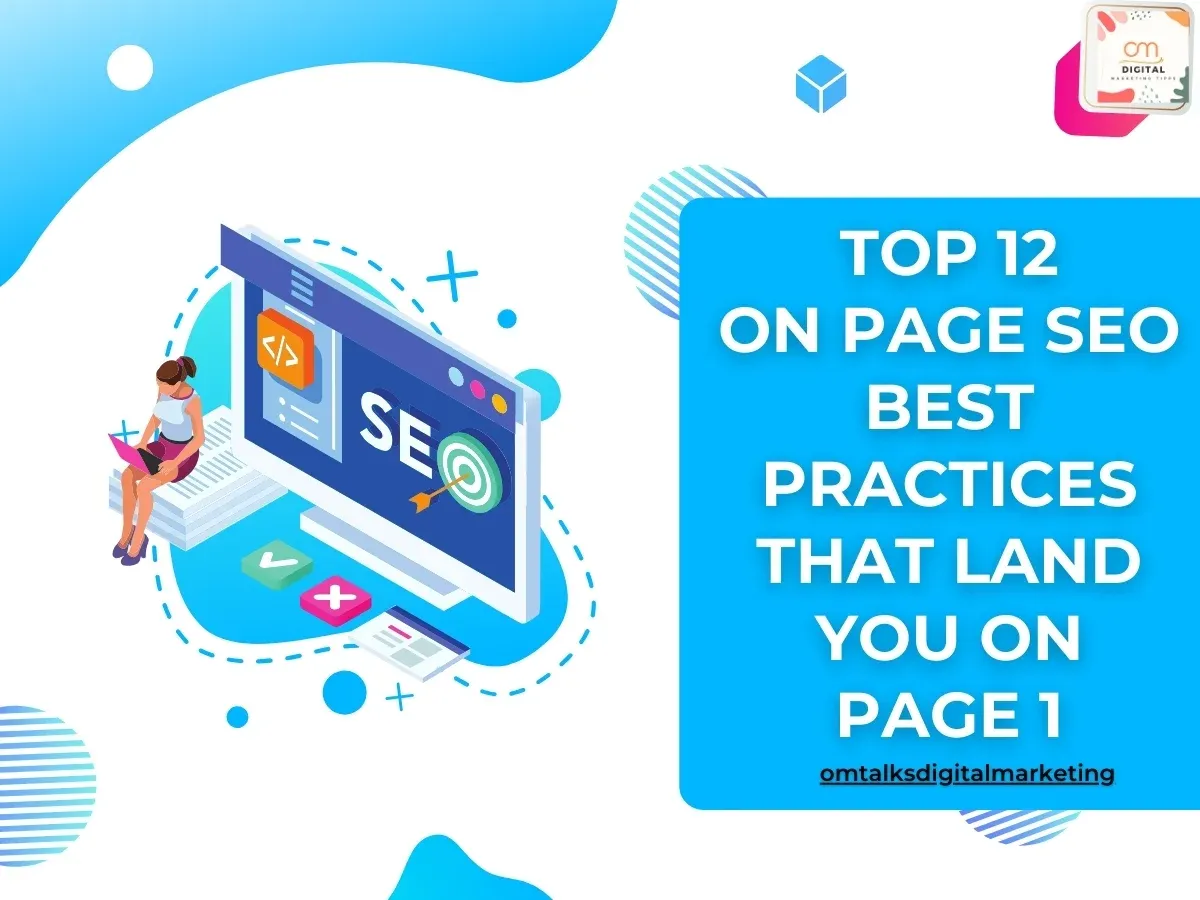Mastering on page SEO is a quest many marketers undertake to ensure their websites rank favorably on Google's search engine results page serps. In this article, we delve into the best practices for on-page SEO that optimize for both Google and users, promising improved visibility, traffic, and user experience.
1. Keywords: The Pillars of On-Page SEO
Therefore, it's essential to incorporate
relevant keywords strategically throughout your content:
- Title Tag optimisation: Your
title tag should contain your primary keyword near the beginning and
prefer long tail keywords. It signals both Google and users about the main
topic of your webpage. Make them unique, descriptive, and between 50-60
characters long to avoid truncation.
- Meta Description: Meta
descriptions do not directly impact rankings, but they do influence
click-through rate (CTR) by enticing users to visit your website. Include
a compelling meta description under 155 characters featuring your primary
keyword. Add target keywords, avoid duplicate content and use active
language and calls-to-action.
- Header tags
and Body Text: Use
header tags (H1, H2, H3) to structure your content and make it easier to
read. Fit your primary and secondary keywords
naturally into your content, signifying relevance and ease of reading.
- Image Alt Text: Don't forget to add descriptive alternative text to images, which
helps search engines understand their context and can boost search engine ranking.
2. Craft High-Quality, Engaging Content (Winning Over Google and Users)
Creating original, informative, and engaging
content is the backbone of any successful on-page SEO strategy. High-quality,
relevant topics is a win-win for Google and users. Google rewards high quality
content with higher rankings, while users value content that addresses their
queries effectively. You can boost the quality of your content by:
- Undertake thorough keyword research
- Write in a natural, conversational tone
- Provide valuable, relevant information
- Avoid keyword stuffing
- Writing long-form content with relevant keywords
- Providing in-depth and valuable information
- Breaking content into readable chunks with subheadings
- Incorporating visuals for enhanced understanding
3. Incorporate SEO-friendly URLs
An SEO-optimized URL structure can significantly
impact search engine rankings. In crafting URLs, remember to:
- Use lowercase letters
- Include relevant keywords
- Prefer dashes over underscores
- Keep it short and descriptive
4. Utilize Responsive Web Design
Considering the increasing trend of mobile
usage, a responsive web design ensures a seamless user experience across
various devices. Opt for a mobile-first design approach and regularly perform
mobile usability tests.
5. Enhance User Experience (UX)
A positive user experience is essential for a
high-ranking on-search engine results page. Optimize your website's UX by
ensuring a clutter-free design, intuitive navigation, and mobile-friendliness.
Additionally, minimize load times by compressing images, minifying files, and
leveraging browser caching.
6. Image Optimization: Eye Candy for Google and Users
Images enhance user engagement and offer an
opportunity to improve SEO rankings. Here’s how to make the most of your
images:
- Use conditional formatting to shrink image sizes without
sacrificing quality, improving load times for users and SEO performance.
- Add descriptive alt text to images, helping Google recognize the
content of the image and providing context for visually impaired users.
7. Speed Up Your Page Load Time
Fast loading websites not only enhance user
experience but also favor search engine rankings. To optimize page load time:
- Optimize image size and format
- Use a content delivery network (CDN)
- Minify CSS, JavaScript, and HTML
- Leverage browser caching
8. Add Structured Data Markup (Schema markup for seo)
Structured data markup, or Schema markup,
helps search engines understand your content better. Implementing structured
data can lead to rich snippets in search results, which can significantly
improve CTR and visibility.
9. Don't Ignore Technical SEO
10. Internal Linking: Guiding Google and Users
Adding internal links in your content can help
search engines discover and index your web pages more efficiently. It also aids
in improving user experience by providing related resources. Ensure that
internal links are relevant, use anchor text wisely, and avoid excessive
linking.
11. Build a Strong Backlink Profile
12. Track and Analyze Your Performance
Keeping an eye on your website's performance
is the key to long-term SEO success. Use tools like Google Analytics and Google
Search Console to track your website's performance, traffic, and keyword
ranking. Adjust your approach whenever necessary by refining your topics and
SEO tactics based on analytical insights.
In conclusion, by implementing and iterating
on these proven on page SEO best practices, you can significantly boost your
website's ranking and inch closer to the coveted first-page placement. Be
patient, and with persistence and consistency, you will soon see your website
climb search engine result pages and reach the upper echelon of organic search
visibility.






0 Comments